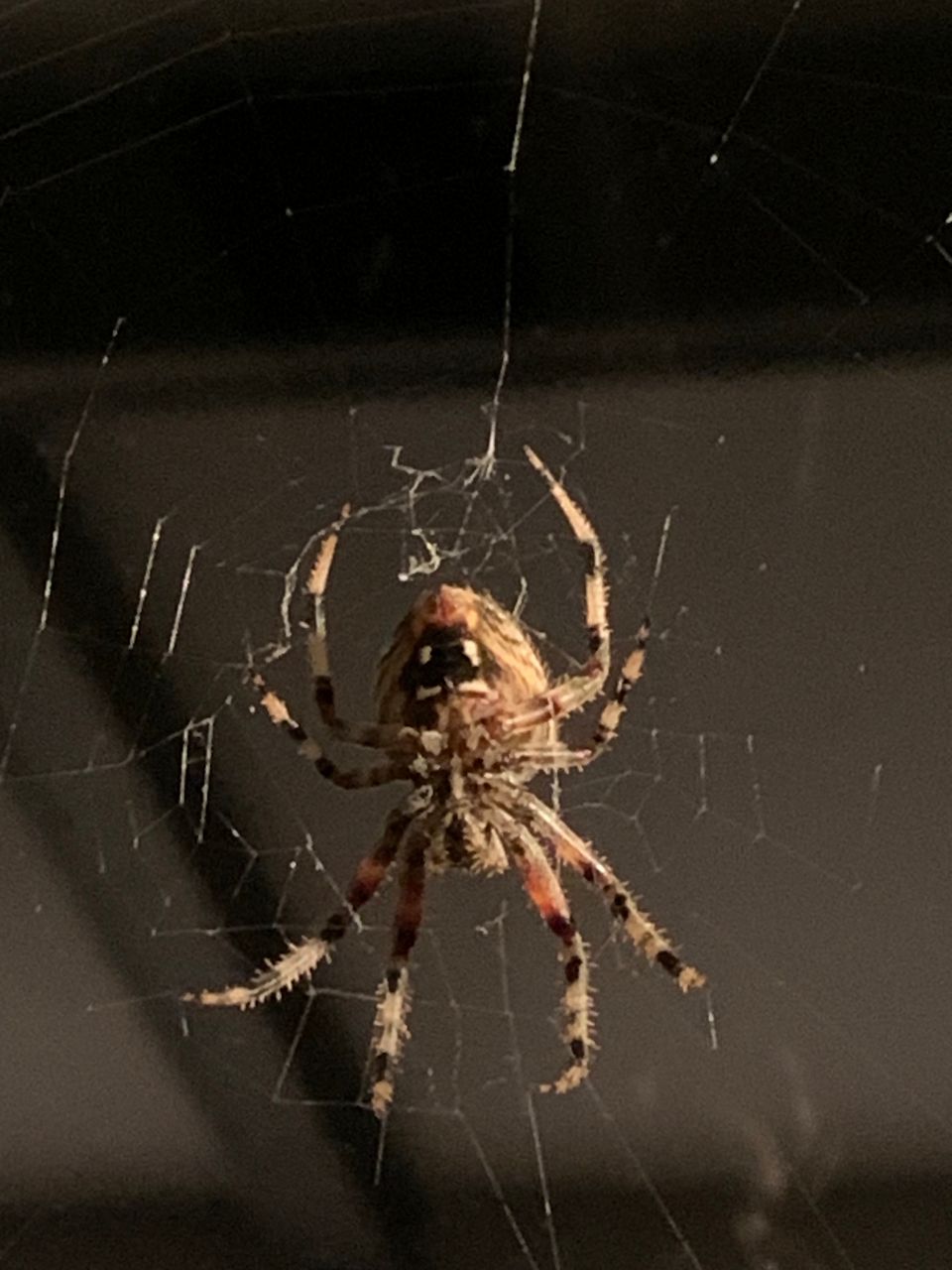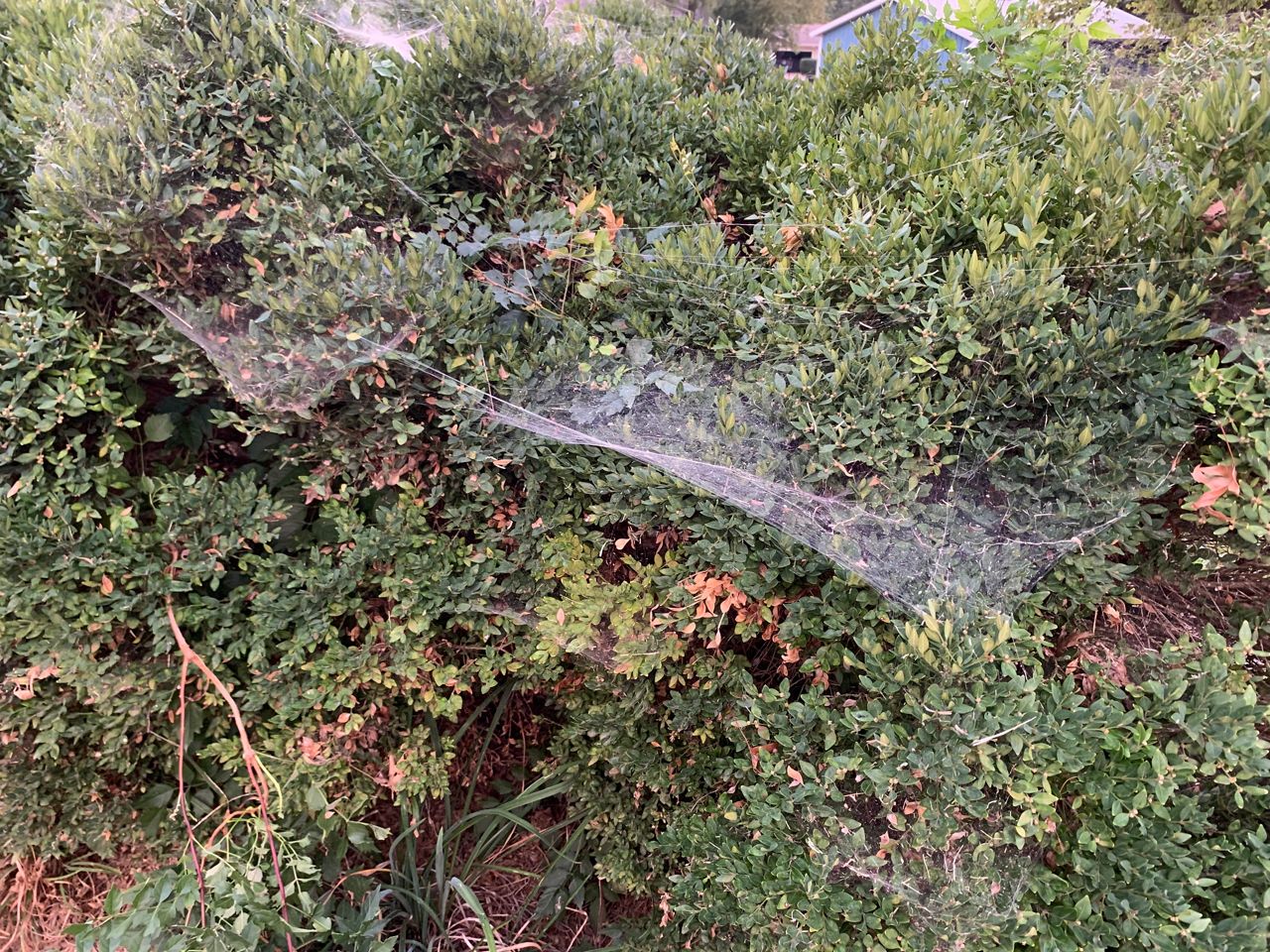They’re creepy and they’re crawly and altogether spooky. That’s why spiders are associated with Halloween. Have you ever noticed this time of the year spider webs become more prevalent?
In fact, check any doorway outside and you’ll likely run into a web. I opened the door to let Boomer, the dog, out and inadvertently destroyed a web created by an Orb Weaver spider. Several hours later, the web was repaired and intact.
The lifecycle of the arachnid begins in the spring with hatching. Spiders that survive into adulthood are big enough to spin webs by the fall.
Webs are not only created to catch food but also for females to lay eggs. The spiders we typically see spinning those geometric webs in the fall are females.
Some spider species are solo creatures and often travel alone, unless during mating. If you see two spiders grouped together, the larger of the two is the female.
Male spiders provide the genetic material and once mating is complete, female spiders typically consume them.
According to the Missouri Department of Conservation (MDC), Missouri is home to over 300 different spiders. Some of the more well-known ones are the Barn or Orb Weaver, Brown Recluse and Wolf spider.
The interesting aspect of the Orb Weaver spider is the spots on the underside of its abdomen. It almost looks like a face with two eyes and a mouth.
Females build the web, usually in cracks or corners near a light source, devouring the insects attracted by the light. She will then dismantle her web at dawn by eating it and then spin a new web by dusk.
These webs can be as large as two feet and make exiting and entering the doorways on which it’s built on more difficult. This spider will not bite unless provoked, and it is not venomous to humans.

A venomous spider commonly found in Missouri is called the Brown Recluse spider. The name “recluse” is fitting, as these spiders are often found hiding in unused drawers, basements, closets, garages or attics.
Before wearing garments found in these locations, including shoes and boots, be sure to inspect them and shake them out to rid of the arachnids. This spider species is quite social, meaning there could be more hiding nearby.
The females lay their eggs in their untidy webs, but spend little of their time in them.
These spiders are identified by the violin shape of their heads and are usually observed running or walking around.
If you think you have a Brown Recluse spider problem in your home, it is best to call in the professionals with a licensed exterminator.
This type of spider does not behave like a typical spider. In fact, it got its name because of its ability to run down its prey like a wolf. They don’t spin webs to catch their food.
The female wolf spider attaches her egg sac to herself and carries it around on the bottom of her abdomen. After the eggs hatch, she will then carry her babies on her back.
Wolf spiders will only bite if provoked, but their bites are harmless to humans.

Some species of spiders die when the temperatures drop below freezing, including the orb weaver. However, if it’s a warm fall, these spiders have more time to eat and grow, leading to bigger spiders.
Other spiders have evolved to survive the colder temperatures, either by seeking shelter indoors or in a pile of leaves or rocks. Once they find this spot, they will go into a state of diapause, slowing down or suspending their body processes into dormancy.
Like any insect, these arachnids will find their way into your home by any means necessary, but this will offer you the best way to keep the majority at bay.
- Seal any cracks or small holes
- Seal all entryways
- Remove webs as soon as they appear
- Keep a clean kitchen free of food and crumbs
- Turn off exterior lights as much as possible because lights attract bugs and bugs will attract spiders
Educate yourself on different spiders. MDC has a field guide on spider species in Missouri. Remember, the non-venomous ones can be helpful in controlling the insect population around your home.
Our team of meteorologists dives deep into the science of weather and breaks down timely weather data and information. To view more weather and climate stories, check out our weather blogs section.


